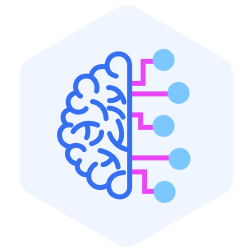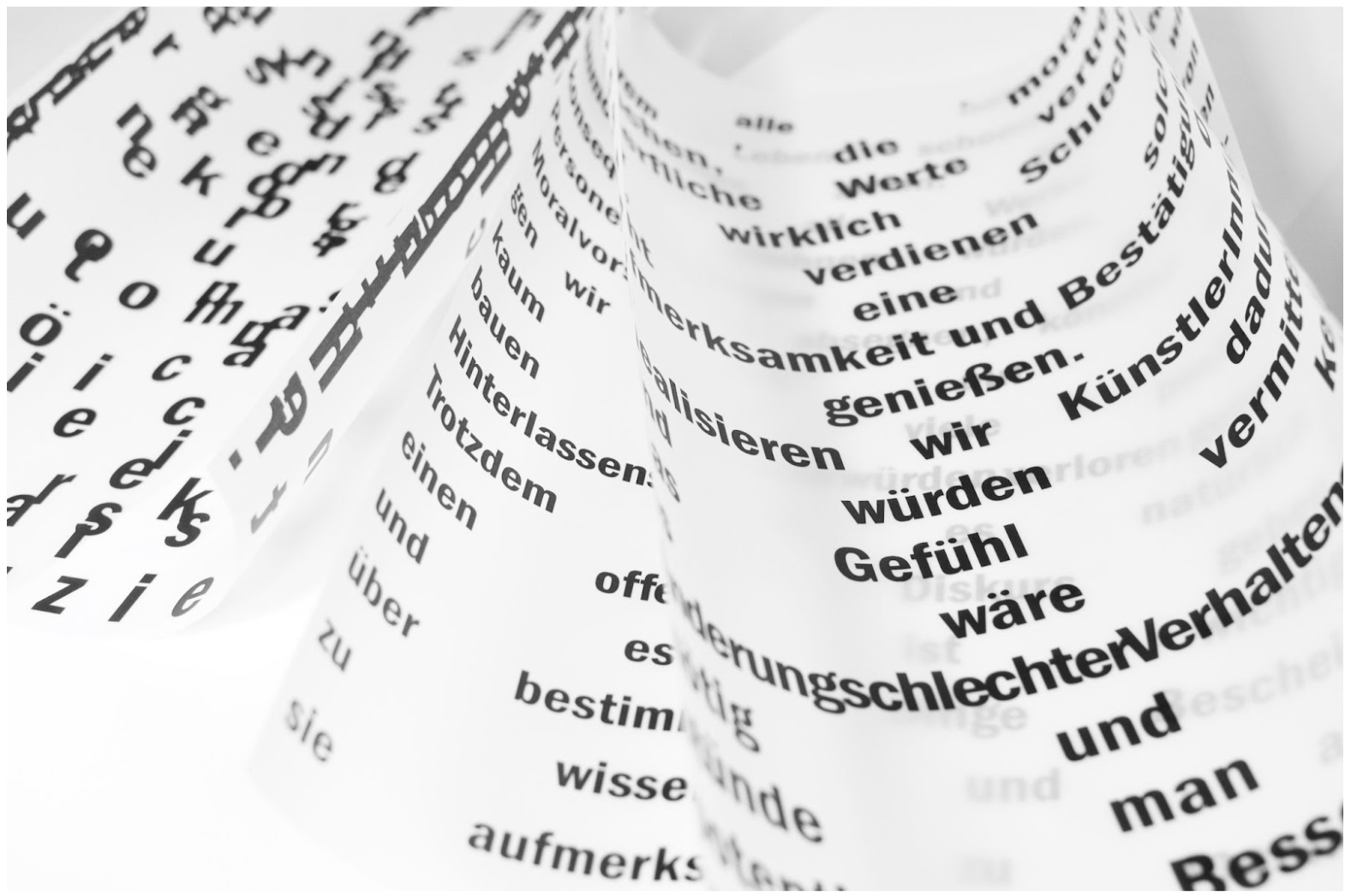What Is a Large Language Model? A Developer's Reference

What Is a Large Language Model? A Developer's Reference

A large language model (LLM) is artificial intelligence (AI) capable of executing diverse natural language processing (NLP) tasks, including translation, conversational question-answering, and word classification and generation. The "large" designation corresponds to the extensive parameter count within its architecture, with prominent LLMs boasting billions of parameters.
An LLM embodies an AI program trained on extensive datasets to comprehend human language intricacies. The model predicts the most probable succeeding word by analyzing copious amounts of data, often sourced from the internet or proprietary corporate databases. Consequently, LLMs have garnered significant attention and adoption across various NLP applications.
LLMs operate on the foundation of deep learning, a subset of machine learning facilitated by neural networks, specifically transformer models. Deep learning facilitates the probabilistic analysis of unstructured data, enabling LLMs to autonomously discern nuanced relationships between characters, words, and sentences. Furthermore, LLMs undergo additional training via fine-tuning or prompt-tuning, tailoring them to tasks like question interpretation or text translation. These AI advancements represent a leap in understanding and generating text-based content. By leveraging large datasets and sophisticated deep learning techniques, LLMs can comprehend and produce human-like responses swiftly and accurately. Their significance extends across diverse domains, owing to their capacity to grasp complex linguistic nuances and generate contextually relevant content.
Furthermore, the emergence of foundation models, a term coined to denote exceptionally large and influential LLMs, underscores the profound impact of these technologies. These foundational models are the bedrock for further advancements and specialization in specific applications, cementing their status as a cornerstone in AI-driven innovations.

Key Features of LLMs and How They Work
Most current LLMs are based on transformer architectures and use a self-attention mechanism to capture the dependencies between words, allowing them to understand contexts. It also uses autoregressive generation to produce text based on previously generated words called tokens.
Let's break all these down to understand better how a large language model works.
Transformer-Based Architecture
Machines that can comprehend text usually use a model based on recurrent neural networks or RNNs. This model processes one word at a time and recursively captures the relationship between words, or "tokens," in a sequence. However, it often needs to remember the beginning of the sequence as it reaches the end. This is where transformer-based architecture comes in.
Unlike RNNs, transformer neural networks that lie at the heart of most language processing models use self-attention to capture relationships.
Attention Mechanism
Unlike recurrent neural networks that see a sentence or paragraph one word at a time, the attention mechanism allows the model to see the whole sentence simultaneously. This allows the model to understand the context better. Most language processing models follow the transformer architecture that uses the attention mechanism. Some LLMs combine both of these with autoregressive generation.
Autoregressive Generation
A transformer model processes text input by tokenizing it into a sequence of words. Then, the tokens are encoded as numbers and transformed into embeddings. Think of embeddings as vector-space representations of these tokens and their syntactic and semantic information.
Next, an encoder transforms the input embeddings into a context vector by analyzing the input and creating hidden states that capture its meaning and context. The context vector is what the decoder in the transformer uses to generate the output. The decoder enables autoregressive generation, where the model uses previously generated tokens to generate sequential outputs. This process is repeated to produce the entire paragraph, with the leading sentence as the starting point. This is how a large language model works.
Benefits of Large Language Models
Large language models offer several benefits due to their versatility in addressing various problems and presenting information in a clear and user-friendly manner. Diverse Applications: These models find utility across multiple domains, including language translation, sentence completion, sentiment analysis, question answering, mathematical computations, and beyond.
Continuous Enhancement: The performance of large language models undergoes continual enhancement by adding more data and parameters. This iterative learning process results in improved capabilities over time. Additionally, large language models exhibit "in-context learning," allowing them to glean insights from prompts without necessitating additional parameters. This continuous learning mechanism contributes to their ongoing development and refinement.
Rapid Learning: Large language models demonstrate rapid learning capabilities, particularly their adeptness at in-context learning. By leveraging existing parameters and resources, they swiftly acquire new knowledge and insights without requiring extensive training data. This agility enables them to learn efficiently with minimal examples.
Limitations and challenges of Large Language Models
Large language models, while appearing to comprehend meaning and respond accurately, are fundamentally technological tools and thus confront various challenges.
Hallucinations: These models may generate false outputs or diverge from user intent, a phenomenon known as "hallucination." Due to their predictive nature focused on syntactic correctness, they may misconstrue human meaning, leading to inaccurate or nonsensical responses.
Security Concerns: Improper management of large language models poses significant security risks, including privacy breaches, participation in phishing scams, and spam generation. Malicious users can exploit these models to propagate misinformation or manipulate content, potentially causing widespread harm.
Bias in Outputs: The biases present in the training data directly influence the outputs generated by language models. Limited or homogeneous datasets can result in outputs lacking diversity and inclusivity, perpetuating existing biases in the model's responses.
Consent Issues: Large language models often utilize datasets obtained without explicit consent, raising ethical concerns regarding data ownership and intellectual property rights. Unauthorized data scraping may lead to copyright infringement and privacy violations, exposing users to legal liabilities.
Scaling Challenges: Scaling and maintaining large language models can be arduous, demanding considerable time, resources, and technical expertise. Ensuring optimal performance and reliability across diverse use cases requires robust infrastructure and meticulous management.
Complex Deployment: Deploying large language models necessitates sophisticated infrastructure, including deep learning frameworks, transformer models, and distributed systems. Technical expertise is essential for successfully implementing and maintaining these complex systems.
What Are LLMs Used For?
As mentioned earlier, an LLM can be used in various ways in many industries, including the following:
- Conversational chatbots that can answer frequently asked questions 24/7 for better customer service
- Text generation for articles, blogs, and product descriptions, especially for e-commerce store stores
- Translating content into different languages to reach a wider audience
- Sentiment analysis to analyze customer feedback from product reviews, social media posts, and emails and to understand the intent of different pieces of content.
- Summarizing and rewriting blocks of text
- Categorizing and classifying text for more efficient analysis and processing
Some of the most common large language models include the following:
BERT
Developed by Google, Bidirectional Encoder Representations from Transformers (BERT) is a famous LLM with two model sizes. While the BERT base model has 110 million parameters, the BERT large model has 340 million. Like other LLMs, it can understand contexts and produce meaningful responses. BERT can also be used for generating embeddings for text.
GPT-3
Generative Pretrained Transformer 3, or GPT-3, is arguably the most popular LLM, partly due to ChatGPT, which is based on GPT-3.5 and GPT-4. The numbers, in this case, denote the version of the model, with GPT-3 being the third. This is one of the largest LLMs. OpenAI developed it and has 175 billion parameters.
RoBERTa
RoBERTa stands for Robustly Optimized BERT Approach. It's an improved version of Google's BERT model developed by Meta AI (formerly Facebook Artificial Intelligence Research, or FAIR). Thanks to a higher parameter count, RoBERTa performs better on many language tasks. Just like BERT, RoBERTa also has two model sizes. The base version has 123 million parameters, while the large version has 354 million parameters.
BLOOM
Open-source LLMs have made it easier for developers, businesses, and researchers to build applications that use these models for free. One example of such an LLM is BLOOM. It's the first LLM that involved the most significant collaboration of AI researchers in a project and is trained in full transparency. It was trained on 1.6 terabytes of data, has 176 billion parameters, and can generate output in 13 programming and 46 natural languages.
T5
Another LLM developed by Google is T5, or Text-to-Text Transfer Transformer, which is trained on various language tasks. Its base version has 220 million parameters, while the large version has 770 million parameters.
Frequently Asked Questions about LLMs

How Do Large Language Models Work?
Large language models are based on the transformer architecture and use self-attention to capture relationships between words or "tokens." They compute a weighted sum for an input and determine how the tokens in the input relate to each other. Attention scores are then used to calculate the relationships between tokens, and autoregressive generation is used to produce the output based on a given input. Most LLMs are trained on vast amounts of textual data available on the internet, but you can also feed them proprietary enterprise data to serve your customers better.
What Is the Difference Between Natural Language Processing and Large Language Models?
Natural language processing (NLP) is a field of artificial intelligence that focuses on processing and understanding human language. Meanwhile, a large language model refers to a model within NLP that can perform various language-related tasks, such as answering questions, summarizing text, and translating sentences from one language to another.
How Do I Create a Large Language Model?
Creating a large language model from scratch involves training it on a massive corpus of data with billions of parameters. This means you need to have an infrastructure with multiple GPUs that supports parallel and distributed computing. Setting this up can be expensive, so most researchers start making an LLM with an existing LLM architecture and its hyperparameters, such as GPT-3. Then, they tweak the hyperparameters, dataset, and architecture to create a new LLM.
What Is Generative AI vs Large Language Models?
"Generative AI" is an umbrella term that refers to a collection of algorithms that can dynamically generate output once it's trained. The distinguishing feature of generative AI is its ability to produce complex output forms, like images, code, poems, etc. Examples of generative AI include DALL-E, ChatGPT, Bard, Midjourney, and MusicLM.
A large language model is a generative AI. Unlike DALL-E, ChatGPT, and other generative AI tools, large language models are trained on text data and produce new text that can be used for various purposes.
- Key Features of LLMs and How They Work
- Benefits of Large Language Models
- Limitations and challenges of Large Language Models
- What Are LLMs Used For?
- Frequently Asked Questions about LLMs
Content
Start Free, Scale Easily
Try the fully-managed vector database built for your GenAI applications.
Try Zilliz Cloud for Free